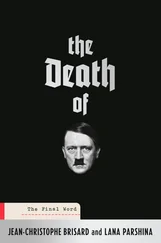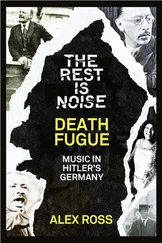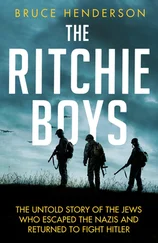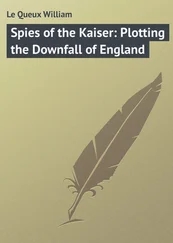23. Mühleisen, Stieff, 150 (Jan. 10, 1942); Hassell, Hassell-Tagebücher, 283 (entry of Nov. 30, 1941).
24. Karl Silex, cited in Scheurig, Tresckow, 125-26.
25. Hassell, Hassell-Tagebücher, 307 (entry of March 28, 1942). Gerhard Ritter already speaks in the winter of 1941-2 of a troika consisting of Beck, Goerdeler, and Witzleben that will form the provisional government after a coup (Goerdeler, 348).
26. It was Olbricht’s widow who called attention to this maxim. She set herself the admirable task of filling in the blanks in research on the resistance and correcting the neglect from which Olbricht has always suffered and the errors that studies of July 20 have made in assigning credit. See Helena P. Page, General Friedrich Olbricht: Ein Mann des 20 Juli (Bonn and Berlin, 1992).
27. Fabian von Schlabrendorff, Offiziere gegen Hitler (Frankfurt and Hamburg, 1959), 55-56. See also Gersdorff, Soldat, 124-25.
28. Schlabrendorff, Offiziere, 55.
29. Hans Bernd Gisevius, Bis zum Bittern Ende (Zurich, 1954), 389.
30. Gisevius, Ende , 508. Goerdeler informed Gerhard Ritter in late 1942 of the various views on arresting Hitler (Goerdeler, 535, n. 14).
31. Hoffmann, Widerstand, 338.
32. Qtd. in Scheurig, Tresckow, 133.
33. H. Kaiser, qtd. in Count Romedio Galeazzo von Thun-Hohenstein, Der Verschwörer: General Oster und die Militäropposition (Cologne and Berlin, 1969), 224.
34. Count Detlef von Schwerin, Dann sind’s die besten Köpfe, die man henkt: Die junge Generation im deutschen Widerstand (Munich, 1991), 289.
35. The available information about why the Boeselager plan was not carried out is contradictory, and it is probably impossible now to clarify the course of events. See Hoffmann, Widerstand, 351, and his Die Sicherheit des Diktators: Hitlers Leibwachen, Schutzmassnahmen, Residenzen, Hauptquartiere (Munich, 1975), 165-66. Scheurig does not discuss the plan. For the course of the visit to Smolensk, see in addition to the works cited above Schlabrendorff, Offiziere, 71ff. After the war Schlabrendorff said that Kluge could not be persuaded to agree to an assassination attempt by the Boeselager unit; see Thun-Hohenstein, Verschwörer, 230.
36. See Hoffmann, Widerstand, 353 and 760, n. 93, and Schlabrendorff, Offiziere, 74-75.
37. Gersdorff, Soldat, 128-29.
38. Gersdorff, Soldat, 132-33.
39. Hassell, Hassell-Tagebücher, 347 (entry of Feb. 14, 1943).
40. Qtd. in Hoffmann, Widerstand, 370. For Groscurth’s message from encircled Stalingrad, see his Tagebücher eines Abwehroffiziers, 1938-1940 (Stuttgart, 1970), 93. Groscurth was taken prisoner along with the remnants of the Sixth Army, soon contracted typhus, and died on April 7, 1943, in the Frolov camp.
41. Christian Petry, Studenten aufs Schafott: Die Weisse Rose und ihr Scheitern (Munich, 1968), 122.
42. Gersdorff, Soldat, 133.
43. Gersdorff, Soldat, 134ff.
44. Müller, Stauffenberg, 279-80.
1. Ulrich von Hassell, Die Hassell-Tagebücher, 1938-1944: Aufzeichnungen vom anderen Deutschland, ed. Friedrich Hiller von Gaertingen, rev. and exp. ed. (Berlin, 1988), 362 (entry of April 20, 1943) and 331 (entry of Sept. 26, 1942).
2. Fabian von Schlabrendorff, Offiziere gegen Hitler (Frankfurt and Hamburg, 1959), 107. For the reasons why Jäger and Schulenburg were suspected, see Peter Hoffmann, Widerstand, Staatsstreich, Attentat: Der Kampf der Opposition gegen Hitler, 3rd ed. (Munich, 1979), 363. Jäger was released after just a few days and Schulenburg managed to assuage his interrogators in the very first interview.
3. Hoffmann, Widerstand, 363ff.; Count Romedio Galeazzo von Thun-Hohenstein, Der Verschwörer: General Oster und die Militäropposition (Berlin, 1982), 236ff; and Heinz Höhne, Canaris: Patriot in Zwielicht (Munich, 1976), 472ff.
4. Höhne, Canaris , 495.
5. See the numerous references in Hassell’s diaries. For “the crux of the matter,” see 405 (entry of Nov. 13, 1943).
6. Hassell, Hassell-Tagebücher, 291 (entry of Dec. 21, 1941), and 345 (entry of Jan. 22, J943).
7. Hans Rothfels, Deutsche Opposition gegen Hitler: Eine Würdigung, exp. ed. (Tübingen, 1969), 163.
8. Cited in Patricia Meehan, The Unnecessary War: White Hall and the German Resistance to Hitler (London, 1992), 337. For a balanced study reflecting the recent tendency in British historiography to do justice to the German resistance and its attempts to win over the Western Allies, see Richard Lamb, The Ghosts of Peace, 1935-1945 (London, 1987).
9. Qtd. in Ger van Roon, Neuordnung und Widerstand: Der Kreisauer Kreis innerhalb der deutschen Widerstandsbewegung (Munich, 1967), 316.
10. Rothfels, Opposition, 187.
11. Alfred Vagts, “Unconditional Surrender-vor und nach 1943,” Vierteljahrshefte fur Zeitgeschichte (1959), 298-99.
12. Rothfels, Opposition, 161-62. For the larger context, see also Klemens von Klemperer, Die verlassenen Verschwörer: Der deutsche Widerstand auf der Suche nach Verbündeten, 1938-1945 (Berlin, 1994), 209ff.
13. Bodo Scheurig, Ewald von Kleist-Schmenzin: Ein Kotiservativer gegen Hitler (Oldenburg and Hamburg, 1968), 183. For Trott’s comment, see Rothfels, Opposition, 158.
14. Van Roon, Neuordnung, 317.
15. Thun-Hohenstein, Verschwörer, 228. For Manstein and Röhricht, see Bodo Scheurig, Henning von Tresckow: Eine Biographie (Frankfurt and Berlin, 1980), 182 and 185. For Fritsch, see Hassell, Hassell-Tagebücher, 71 (entry of Dec. 18, 1938). For Canaris and his “profound fatalism,” see Harold C. Deutsch, Verschwörung gegen den Krieg: Der Widerstand in den Jahren 1939-1940 (Munich, 1969), 386; see also Margret Boveri, Fur und gegen die Nation, vol. 2 of Der Verrat im XX. Jahrhundert (Hamburg, 1956), 51.
16. Hassell, Hassell-Tagebücher, 350 (entry of March 6, 1943).
17. Scheurig, Tresckow, 243, n. 83.
18. Archiv Peter, ed., Spiegelbild einer Verschwörung: Die Kaltenbrunner-Berichte über das Attentat vom 20. Juli 1944 (Stuttgart, 1961), 412; for the message to J. Wallenberg, see Gerhard Ritter, Carl Goerdeler und die deutsche Widerstandsbewegung (Stuttgart, 1984).
19. Joachim Kramarz, Claus Graf Stauffenberg, 15. November 1907-20 Juli 1944: Das Leben eines Offiziers (Frankfurt, 1965), 131.
20. Eberhard Zeller, Geist der Freiheit: Der zwanzigste Juli (Munich, 1963), 242; Christian Muller, Oberst i.G. Stauffenberg: Eine Biographie (Dusseldorf, 1970), 239.
21. Müller, Stauffenberg, 235; Zeller, Freiheit, 244.
22. Ritter, Goerdeler, 367.
23. Kramarz, Stauffenberg, 113.
24. Zeller, Freiheit, 246-47.
25. See Müller, Stauffenberg, 14ff., which describes briefly but thoroughly the emergence and step-by-step transformation of a few doubtful memories, later recanted, and a few prejudices into a historical legend of considerable influence. The Soviet version was well known in the Federal Republic and was enthusiastically embraced as a contribution to détente by Daniel Melnikov, 20. Juli 1944: Legende und Wirklichkeit (Hamburg, 1968). See also Hoffmann, Widerstand, 304ff. and 744, n. 139.
26. Kramarz, Stauffenberg, 147-48.
27. Helena P. Page, General Friedrich Olbricht: Ein Mann des 20 Juli (Bonn and Berlin, 1992), 246.
Читать дальше
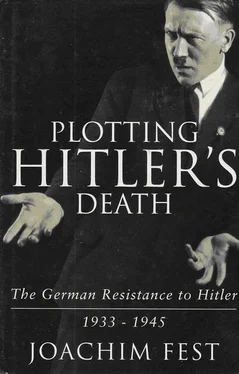
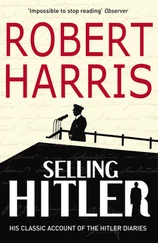
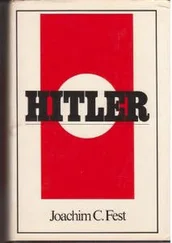
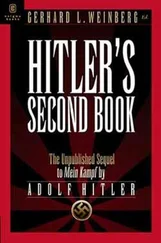
![Traudl Junge - Hitler's Last Secretary - A Firsthand Account of Life with Hitler [aka Until the Final Hour]](/books/416681/traudl-junge-hitler-s-last-secretary-a-firsthand-thumb.webp)
